Bright services
Hubspot portal review, haal alles uit je hubspot licentie, laat je inspireren, hubspot nieuwsbrief, op de hoogte blijven van het laatste hubspot nieuws, welkom bij bright, join the bright side, wij zoeken volop a-spelers.


Wat is de buyer journey?
De buyer journey is het proces dat een potentiële klant doorloopt op weg naar een aankoop. Het belangrijkste uitgangspunt hierbij is dat de behoeften en vragen van de koper veranderen tijdens de verschillende fasen van dit koopproces.
Het buyer journey model komt voort uit de content marketing en is later ook geadopteerd in de inbound marketing methode .
Waarom het buyer journey model?
In inbound marketing hebben we een nobel streven: de potentiële klant in -iedere fase- van het koopproces optimaal vooruit helpen. Het in kaart brengen van de buyer journey ondersteunt dit proces.
De behoeften en intentie van een lead veranderen in iedere fase van de buyer journey. In de beginfase is de koper vooral aan het oriënteren en is er geen commerciële intentie. Naarmate het koopproces vordert, wordt de behoefte richting een concrete oplossing steeds concreter en neemt de commerciële intentie toe.
We helpen de buyer persona (representatie van jouw ideale klant) dus optimaal vooruit wanneer we onze content aanpassen aan -en matchen met- de fasen van de buyer journey. Zo komt vraag en aanbod perfect overeen en ontstaat er harmonie.

Buyer journey fasen
We onderscheiden in de buyer journey de volgende fasen:
Awareness - bewustwordingsfase
De awareness fase wordt in het Nederlands ook wel de bewustwordingsfase genoemd. In deze fase van de buyer journey wordt de potentiële klant zich bewust van een probleem, of de mogelijkheid tot het benutten van een kans.
Aan het begin van deze fase is dit bewustzijn nog niet of nauwelijks aanwezig. Daarom is het belangrijkste doel in deze fase om de klant bewust te maken van de aard en omvang van het probleem (of de aard en omvang van de mogelijke kans).
De behoefte van de buyer persona is in deze fase vooral: informatie inwinnen en meer leren over het probleem (of het benutten van de kans).
Content is daarom in deze fase niet commercieel van aard. Over het product of dienst wordt (nog) niet geschreven. De content concentreert zich rondom alle facetten van het probleem, zodat het bewustwording bij de potentiële koper groeit.
Consideration - overwegingsfase
In de consideration fase van de buyer journey heeft de potentiële klant het probleem gedefinieerd en afgebakend en gaat hij/zij op zoek naar oplossingsrichtingen.
In Nederland wordt deze fase de overwegingsfase genoemd omdat de buyer persona verschillende oplossingsrichtingen overweegt in de fase.
De behoefte van de buyer persona is in deze fase al een stuk concreter. Het probleem is bekend en afgebakend. Nu is het tijd om alle ins & outs te onderzoeken. Een deep dive dus.
De content is in deze fase gematigd commercieel. De nadruk ligt nog steeds op het oplossen van het probleem, of het benutten van de kans. Denk bijvoorbeeld aan het proces of de methodiek (hoe) in plaats van puur het product of dienst (wat).
Decision - beslissingsfase
In de decision fase neemt de buyer persona de beslissing voor een oplossing en vindt dus de aankoop plaats.
Ook hier wordt er in Nederland een vrij directe vertaling gehanteerd, namelijk: de beslissingsfase.
De behoefte van de buyer persona ligt in deze fase compleet bij specifieke oplossingen. Verschillende producten en/of diensten worden in detail onderzocht en met elkaar vergeleken.
Content is in deze fase van de buyer journey gefocust op het product of het in gebruik nemen van het product. Denk in de b2b bijvoorbeeld aan het implementatieproces en de impact en gevolgen daarvan. Zo dicht op de aankoop, is de koper tevens op zoek naar bevestiging van het nemen van de juiste beslissing. Om deze reden worden er vaak case studies en/of testimonials ingezet om de klant te overtuigen.
Promoter - klantfase
De laatste fase van de buyer journey is de fase waarin jouw klant je product en/of dienst actief gebruikt. HubSpot noemt deze fase de promoter fase omdat het ultieme doel van inbound marketing is dat klanten ambassadeurs worden van je bedrijf en/of merk.
Andere marketingspecialisten bekijken deze fase meer vanuit het perspectief van de klant en noemen het de service of support fase. Dit is met name een b2b perspectief omdat veel b2c producten geen service of support fase kennen.
De behoefte van de klant ligt in de klantfase rondom het beter gebruiken van de oplossing.
Goede content vervult deze behoefte. Denk aan handleidingen om het product efficiënter of effectiever te gebruiken, of content in de support sfeer, zoals een serviceportaal of FAQ pagina’s.
Buyer journey vs customer journey
Er is veel verwarring over het verschil tussen de buyer journey en de customer journey. Dit is niet heel vreemd, want de woorden lijken al op elkaar, maar ook qua inhoud zijn er overeenkomsten.
Het korte (maar onvolledige) antwoord is:
- De buyer journey focust op potentiële klanten (leads) en hun koopproces.
- De customer journey focust op klanten en hun ervaring met het bedrijf, product en/of dienst.
Niet twee journeys, maar één
Door de jaren heen kwamen er echter nieuwe inzichten en is de scheidingslijn tussen de buyer journey en de customer journey vervaagd. Zo heeft Avinash Kaushik van Google het See (Awareness), Think (Consideration), Do (Decision), Care (Promotor) model in het leven geroepen en voegen ook steeds meer andere marketingexperts de klantfase(n) toe aan het buyer journey model.
Wanneer je dit alles vanuit het oogpunt van de klant bekijkt, is het niet meer dan logisch om één model te hanteren. Voor de klant is er één doorlopende “reis”, niet twee afzonderlijke.
Bij Bright Digital adviseren we daarom om één journey model te hanteren. Dit is klantgericht en pragmatischer dan twee afzonderlijke. Of je dit buyer journey of customer journey noemt, dat laten we aan jou over ;-). Als het eindresultaat maar is dat je jouw klant keer-op-keer optimaal van dienst bent.
“De term ‘customer’ (in customer journey) is eigenlijk niet goed gekozen, want ook potentiële klanten behoren tot de reis die leidt tot de aanschaf van een product of dienst.” - Bart van de Kooi, De Customer Journey in kaart in 60 minuten.
Het kan echter wel een zinvolle exercitie zijn om de klantfase uit te diepen. Een klant wordt niet zomaar van ene op de andere dag een promoter namelijk. Om je een idee te geven van dit proces, verwijzen we naar de customer fasen in het boek: ‘ De customer journey in kaart in 60 minuten ’ (ook in dit boek één reis van potentiële koper naar klant).
De klantfasen die in dit boek uitgediept worden, zijn:
- Leveringsfase bij een b2b project bijvoorbeeld de implementatieperiode.
- Gebruiksfase waarin de klant het product actief gebruikt.
- Loyaliteitsfase waarin loyaliteit ontstaat. Eerst transactioneel, daarna emotioneel.
- Ambassadeursfase waarin klanten reclame maken voor jou en je bedrijf promoten.
De rol van marketing automation
Marketing automation helpt je niet bij het in kaart brengen van de buyer journey, maar het helpt je wel in de uitvoeringsfase.
Zoals je hebt gelezen is het streven van inbound marketing om leads en klanten optimaal te helpen in iedere fase van de buyer journey. Dit betekent dat je ze de juiste content (passend bij de buyer journey fase) aanbiedt op het juiste moment. Dit noemen we lead nurturing . Met marketing automation bereik je dit en is dit proces tevens onbeperkt schaalbaar.
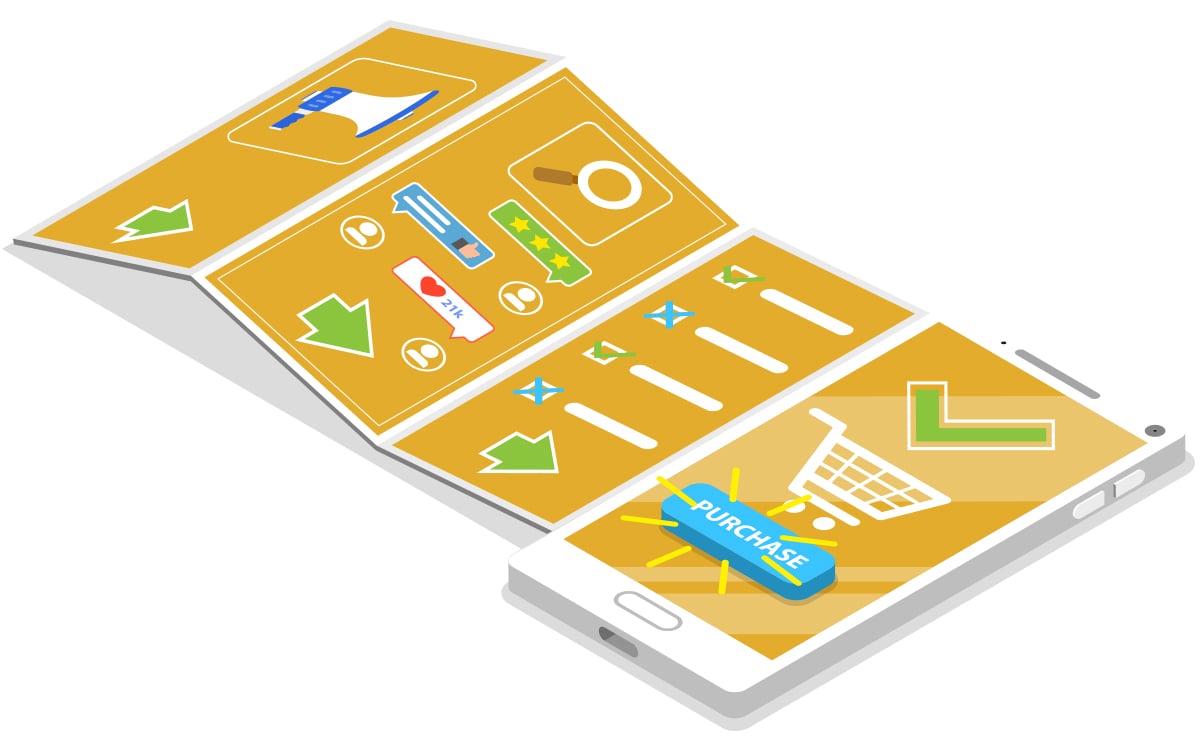
Tips buyer journey in kaart brengen
We sluiten af met een paar gouden tips op het gebied van buyer journey mapping:
Link een buyer journey altijd aan één buyer persona
Een buyer persona is een realistische afspiegeling van jouw ideale klant. Deze buyer persona heeft een bepaalde rol in de organisatie die bepalend is voor een groot deel van het handelen. Om deze reden is een buyer journey altijd gelinkt aan één bepaalde buyer persona.
Stel bij je buyer persona onderzoek ook buyer journey vragen
Bij een buyer persona onderzoek interview je klanten en leads om inzicht te krijgen in onder meer: hun doelen, behoeften, problemen en angsten. Alleen dan ben jij in staat om content te (laten) schrijven die perfect aansluit bij de behoeften van je potentiële klant.
Waarom zou je deze gelegenheid niet gebruiken om meer te leren over hun koopreis? Structureer daarom het interview naar het buyer journey proces. Begin met vragen over de bewustwordingsfase en vervolg met vragen over de overwegingsfase en de beslissingsfase. Interview je een klant? Stel dan ook vragen die betrekking hebben op de klantfase van de buyer journey.
Op deze manier krijg jij niet alleen inzicht in de behoeften van de klant, maar krijg je inzicht in de behoeften van de klant in relatie tot de buyer journey.
Doe zoekwoorden onderzoek
Zoekwoorden onderzoek wordt vaak -geheel onterecht- gekoppeld aan zoekmachine marketing. Een dergelijk onderzoek biedt ook inzichten in de vraag en het terminologiegebruik van de buyer persona.
Veel zoekwoorden hebben een intentie die duidelijk te linken is aan één specifieke buyer journey fase. Wanneer iemand bijvoorbeeld zoekt op ‘ Wat is SEO? ’ dan is het duidelijk dat het om een informatiebehoefte gaat in de bewustwordingsfase. Googelt iemand op ‘ inbound marketing bureaus vergelijken ’ dan zit hij/zij waarschijnlijk in de beslissingsfase. Ook de klantfase is gemakkelijk te herkennen. Wat denk je bijvoorbeeld van de zoekopdracht ‘ handleiding Hubspot workflows ’, of ‘ Hubspot Academy ’?
Verwerk de buyer journey in inbound marketing campagnes
Wanneer de buyer journey helemaal in kaart is gebracht, weet jij welke behoeften jouw potentiële klanten hebben en wanneer ze dat hebben (in welke fase van het koopproces).
Gebruik deze kennis. Schrijf content die toegewijd is aan de behoeften van één buyer persona in één bepaalde buyer journey fase. En zorg dat je voor iedere fase in de buyer journey content hebt die de lead vooruit helpt.
Zet vervolgens marketing automation in om de content op het juiste moment aan te bieden aan je leads en klanten.
Lees verder over buyer persona’s
Buyer persona’s en de buyer journey zijn onlosmakelijk verbonden. Uitleg, tips en advies hierover vind je op onze buyer persona pagina .

Advies nodig?
Heb je na het lezen van deze pagina vragen? Of wil je eens vrijblijvend brainstormen met een van onze inbound marketing consultants? Schroom dan niet.

Bright Digital is dé partner voor bedrijven die versneld willen groeien met HubSpot
Vosselmanstraat 300 7311 VV Apeldoorn Bekijk locatie Bel +31 85 - 760 8181
Prins Bernhardplein 200 1097 JB, Amsterdam Bekijk locatie Bel +31 85 - 760 8181
Stay connected


Wat is de buyer journey
De buyer journey of klantreis is de reis die een potentiële klant maakt om uiteindelijk een klant bij jouw bedrijf te worden.
De buyer journey heeft daarbij niet alleen betrekking op de kanalen die je kiest, maar ook op de inhoud van je boodschap in elke fase van het proces. Door deze klantreis in kaart te brengen kun je hier met je communicatie beter op inspelen en uiteindelijk meer leads genereren.
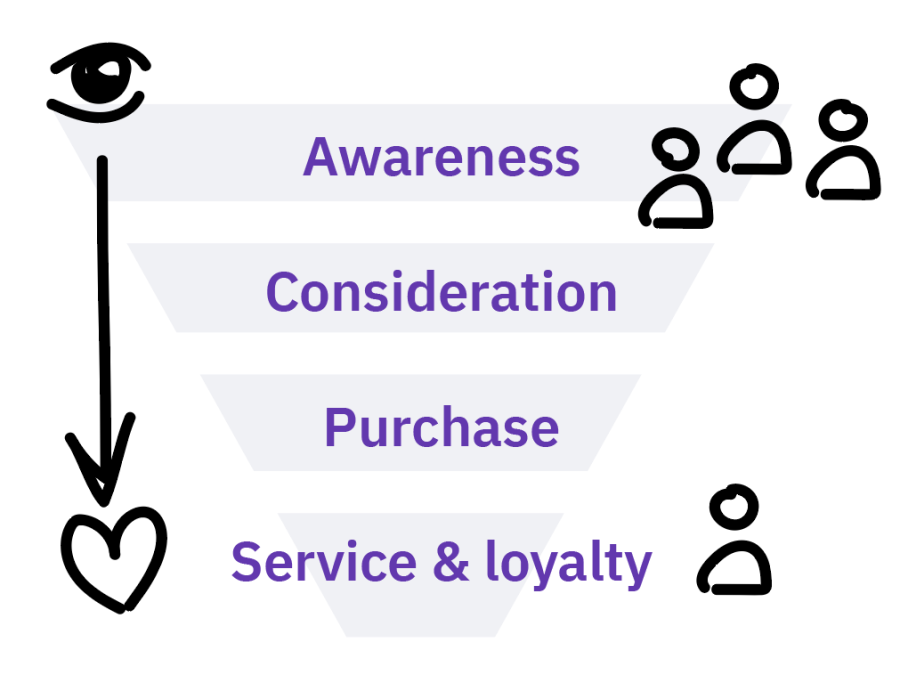
Buyer journey: 3 onderdelen
In het buyer journey model worden drie verschillende fases van het koopproces belicht. In iedere fase vertoont de klant een ander gedrag.
1. Awareness – Bewustwording
De eerste fase in de buyer journey is dat potentiële klanten bewust worden dat zij behoefte hebben aan een bepaalde dienst of product voor een probleem. Vaak zijn zij nog niet bekend met je bedrijf, product of dienst.
In deze fase ga potentiële klanten activeren door jezelf bij hen onder de aandacht te brengen. Dit kan door te adverteren via social media, Google AdWords of offline kanalen als print. In deze advertenties verwijs je naar informatie die je potentiële klanten helpt hun probleem op te lossen.
2. Consideration – Overweging
In deze fase zijn potentiële klanten zich inmiddels bewust geworden van hun probleem en oriënteren zij zich op mogelijke oplossingen. Potentiële klanten gaan zich verdiepen in hun probleem en overwegen wie hen daarbij kan helpen.
Je moet dan ook duidelijk zijn wat je aanbiedt en hoe jouw bedrijf kan helpen bij de problemen van je potentiële klanten. In deze fase is het van belang om de meerwaarde van je bedrijf onder de aandacht te brengen en het vertrouwen van de potentiële klant te winnen. Dit doe je door uit te leggen hoe jouw dienst of product werkt en waarom mensen voor jou zouden moeten kiezen. Voeg daar ook een duidelijke call to action toe.
Onze video legt bijvoorbeeld uit hoe onze diensten bedrijven kunnen helpen en wat ons onderscheidt:
Wanneer potentiële klanten een of meerdere oplossingen gevonden hebben is zullen zij een overweging maken wat voor hen de beste oplossing is en daarbij ook rekening te houden met extra zaken als kosten en service. Probeer dit voor hen zo duidelijk mogelijk te maken door de verschillen tussen jou en je concurrenten toe te lichten.
Een andere vorm om potentiële klanten te overtuigen zijn ervaringen of beoordelingen door mensen of bedrijven die je dienst/product eerder hebben afgenomen. Probeer in dat geval duidelijk naar voren te laten komen waarom deze klanten jou hebben gekozen boven de concurrentie.
Daarnaast is het ook in deze fase van belang om online goed zichtbaar te zijn, zodat je niet alleen gevonden wordt door potentiële klanten maar ook aan vertrouwen en autoriteit wint. Wanneer je bijvoorbeeld hoog in de organische zoekresultaten staat op de vraag die je potentiële klant stelt, zal dit bijdragen aan het vertrouwen.
3. Purchase – Aankoop
De potentiële klant is overgegaan tot de aankoop van je product of dienst. In deze fase is het belangrijk dat het aankoopproces goed, eenvoudig en soepel verloopt.
Zorg ervoor dat mensen snel je producten- of dienstenaanbod weten te vinden op je website en dat het bestelproces eenvoudig en soepel is.
Bonus: gratis ebook over leadgeneratie
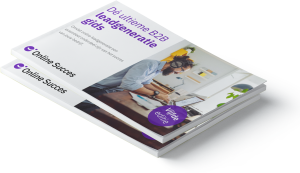
Alles weten over leadgeneratie? Download dan ons gratis ebook en leer hoe je leads genereert én opvolgt in een zakelijke markt. Het is ons meest gelezen ebook en in 2022 compleet herschreven voor de 5e editie.
Download ebook direct »
Nieuw hier?
- Wat is Online Succes
- Lees onze blogs
Oplossingen
- Voor marketeers
- Voor salesteams
- Helpcentrum
- Product Updates
- Partnerprogramma
- Ons verhaal
- Werken bij Online Succes
Begrippenlijst
- b2b leadgeneratie
- website leads
Maak van je website een nieuw leadkanaal.

Iedere woensdag om 12:00 een nieuwe online marketing hack gratis in je inbox.
Het koopproces en de buyers journey | Uitleg & Tips
Wat is een buyers journey.
Een buyers journey is een weergave van alle stappen die een klant zet voordat deze overgaat tot kopen. Niet iedere klant zal het gehele koopproces doorlopen en het proces zal voor iedere klant verschillen.
Door de buyers journey in kaart te brengen kun je via de marketing de juiste acties inplannen.
B2B buyers journey
Binnen de B2B duurt het koopproces (over het algemeen) wat langer. Er zijn meerdere beslisslagen en er wordt langer gedaan over een koopbeslissing.
B2B sales is dan ook in het algemeen een stuk complexer.
B2C buyers journey
Binnen de B2C zie je dat het koopproces over het algemeen juist snel gaat. Marketing ligt vooral op de massa en veel van de aankopen worden op impuls of op basis van herhaling gemaakt. De klant kende het bedrijf al en hoeft niet meer overtuigd te worden.
Aan de slag met jou Buyers Journey
De reis van de koper is het proces dat kopers doorlopen om zich bewust te worden van een nieuw product of dienst, deze te evalueren en te kopen.
Een buyers journey is anders dan een customer journey .
Een customer journey gaat over de reis van de klant. Er wordt omschreven hoe iemand klant is geworden, hoe ze bekend zijn geraakt met het bedrijf en hoe er met bestaande klanten wordt omgegaan.
De 4 fases binnen de Buyers Journey
Kijken we naar het buyer journey model dan wordt er gebruikgemaakt van 3 fases. Bewustwording, overweging en beslissing.
Wij werken liever met 4 fases.
Omdat dit jou veel beter helpt om de complete reis in kaart te brengen. Uiteindelijk gaat het er ook niet om dat je mooie buyers journey in kaart brengt, maar om je marketing en verkoopstrategieën beter af te stemmen.
1 | De bevestiging
Bevindt jouw klant zich nog in de bevestigingsfase, dan zit deze nog aan het begin van het koopproces. Er is een probleem of behoefte geconstateerd en eigenlijk weet je nog niets.
Je klant heeft wel een behoefte of probleem waar hij iets mee wil doen, maar laat nog geen gedrag zien.
Inspelen op de bevestigingsfase is lastig, al dan niet onmogelijk.
Wil je inspelen met je marketing op de allereerste fase, verdiep je dan in het brein van je klant.
Denk na over de situatie waarin je klanten zich bevinden voordat zij behoefte krijgen aan jouw product of dienst.
Hoe je dit doet, leg ik je uit in de video.
2 | Informatie zoeken
Bevindt jouw klant zich in de informatiefase, dan laat hij het gedrag zien om van zijn probleem af te willen komen.
Er wordt naar oplossingen gezocht, er worden vragen gesteld en men bereidt zich voor op de volgende fase in het koopproces: het evalueren van de alternatieven.
Onderzoek hoe jij jouw potentiële klanten helpt met het geven van de juiste informatie.
Bekijk blogs, reviews en forums van je concurrenten om te achterhalen welke vragen er worden gesteld.
Hoe meer inzicht je hebt, hoe beter je in staat bent je marketing hierop aan te passen.
Zorg dat je nadenkt welke informatie iemand wenst, denk na over de juiste marketingstrategie en bepaal wat de meest logische vervolgstap is.
3 | Evaluatie
Bevindt jouw klant zich nog in de evaluatiefase, dan bevindt hij zich behoorlijk ver in het koopproces. De klant is bijna klaar om te kopen.
Er dient nog een keuze gemaakt te worden.
De klant bekijkt alle mogelijke oplossingen voor zijn probleem of alle verschillende mogelijkheden om in zijn behoefte te voorzien.
De klant is klaar voor de volgende stap, maar moet nu eerst een keuze maken.
Een keuze tussen jou of je concurrent.
Hoe voorkom je dat je van jouw concurrent verliest?
Wees beter.
Waarom bang zijn voor je concurrenten wanneer je je klanten kunt helpen kiezen?
Een klant vergelijkt toch wel. Hoe belangrijker de uitgave of keuze, hoe belangrijker ons brein het vindt om een weloverwogen keuze te maken.
Of we uiteindelijk daadwerkelijk een weloverwogen keuze hebben gemaakt is de volgende vraag, maar gevoel moet er zijn.
Laat mensen de vergelijking maken. Niet iedereen zal je klant worden en dat hoeft ook niet. Toon je klanten of ze WEL of juist NIET bij jou passen.
Denk na over wat jou een geschikte partij maakt.
Help je klanten verder in het koopproces. Laat ze een vergelijking maken tussen jouw dienst en die van je concurrent of intern in je assortiment.
Verkoop je meerdere producten of vergelijkbare diensten, help je klant kiezen.
De laatste fase van de buyers journey is het daadwerkelijk kopen.
Wil je jij je marketing richten op deze laatste fase in het koopproces, bedenk dan wat een klant nodig heeft, of juist tegenhoudt, om de koopbeslissing te maken.
Welke obstakels kan iemand hebben?
Bedenk hierbij eerst de obstakels die iemand kan ervaren over het product of de dienst zelf. Heb je deze obstakels weggenomen, neem dan de obstakels weg die bij jouw bedrijf passen.
Hoe zit het met je levertijd, regio, garanties etc. Gooi alles in de strijd om de laatste obstakels weg te nemen en de klant voor jou te winnen.
De verkooptechnieken voor het complete koopproces
Voor iedere fase zul je andere verkooptechnieken moeten gebruiken. Verdiep je in het brein van je klant als je écht klanten wilt werven .
Denk bij iedere fase wat de klant nodig heeft om hem verder te helpen in het koopproces.
Test wat werkt, werk met A/B testen en maak kleine aantekeningen tijdens je verkoopgesprek . Blijf onderzoeken en testen wat werkt.
Zet jij je vol in, maar blijft het resultaat uit?
Voelt het alsof je alle trucs al hebt geprobeerd? Blogs doorspitten, eindeloos video’s bekijken, podcasts op repeat – en toch, geen steek verder.
Herkenbaar?
Misschien mis je wel die ene gouden tip die alles op zijn kop zet.
Ik snap het helemaal.
Zelf heb ik me 15 jaar geleden een weg gebaand door de jungle van ondernemen. Jarenlang worstelen, experimenteren, falen en weer opstaan. Tot ik de sleutel vond. Die sleutel? Die draaide mijn tweede onderneming van een bescheiden start-up naar een bloeiend coachbedrijf verspreid over heel Nederland.
Nu, met meerdere succesvolle bedrijven op mijn naam sta ik hier. Als jouw gids in de online marketing en business wereld, klaar om jou door dat doolhof te leiden.
👉 Online Marketing & Business Coaching Terwijl we strategisch aan je bedrijf werken laten we het internet al het harde werk doen.
👉 Online Marketing Advies Ik help je jouw visie te vertalen naar een concreet, winnend online marketingplan.
👉 De Sw!tch Speciaal voor ondernemers die klaar zijn voor de grote sprong. Dit programma is jouw ticket uit de sleur, door dat plafond heen, rechtstreeks naar het succes dat je verdient.
Krijg de brutaalste marketing tips iedere week gratis in je inbox.
- Herman Kuijkstraat 52 Geldermalsen
- 085 303 3950
- Marketing & Business Coaching
- Online marketing advies
- De 5 Sleutels voor 100K
What Is the Buyer's Journey?
Updated: July 21, 2022
Published: April 21, 2021
Today's buyer is more informed than ever before, thanks to the vast amount of information available at their fingertips. Because of this, the balance of power has shifted from the sales rep to the buyer in most sales conversations . This is why pushy sales tactics are no longer effective the way they used to be.

Instead, to be successful in sales in today's day and age, sales reps must adapt their mindset from selling to helping . And the best way to start this process is becoming intimately familiar with who the buyer is and the journey they take on their path to purchase : The buyer's journey .
hbspt.cta._relativeUrls=true;hbspt.cta.load(53, '12501f7c-8e26-4e3c-9642-7afbe078156a', {"useNewLoader":"true","region":"na1"});
What is the buyer's journey.
The buyer's journey describes a buyer's path to purchase. In other words, buyers don't wake up and decide to buy on a whim. They go through a process to become aware of, consider and evaluate, and decide to purchase a new product or service.
By understanding the buyer's journey , the pains and problems they experience along that journey, and the influencing factors that shape their thinking, sales reps can better empathize with the buyer and position their product or service along that path. So let's dig in a little further.
What are the three stages of the buyer's journey?
The buyer's journey can be broken down into three steps or "stages" that describe how they advance along their path to purchase: the awareness stage, the consideration stage, and the decision stage.
Here's how to conceptualize each stage:
- Awareness Stage: The buyer becomes aware that they have a problem.
- Consideration Stage: The buyer defines their problem and considers options to solve it.
- Decision Stage: The buyer evaluates and decides on the right provider to administer the solution.

Now that the overall journey has been defined, let's take a look at each stage in greater detail, from the buyer's perspective:
.webp)
Free Customer Journey Template
Outline your company's customer journey and experience with these 7 free templates.
- Buyer's Journey Template
- Future State Template
- Day-in-the-Life Template
You're all set!
Click this link to access this resource at any time.
What is the buyer doing during the awareness stage?
The buyer is experiencing a problem or symptoms of a pain, and their goal is to alleviate it. They may be looking for informational resources to more clearly understand, frame, and give a name to their problem.
- Example: "Why do my feet hurt all the time?"
What is the buyer doing the consideration stage?
The buyer will have clearly defined and given a name to their problem, and they are committed to researching and understanding all of the available approaches and/or methods to solving the defined problem or opportunity.
- Example: "How do you treat arch pain?"
What is the buyer doing during the decision stage?
The buyer has decided on their solution strategy, method, or approach. Their goal now is to compile a list of available vendors, make a short list, and ultimately make a final purchase decision.
- Example: "Where can I get custom orthotics? How much will they cost?"
If you don't have an intimate understanding of your buyers, it may be difficult to map out the buyer's journey in a way that will be helpful from a sales perspective. In this case, be sure to conduct a few interviews with customers, prospects, and other salespeople at your company to get a sense of the buying journey.
Tailoring Your Sales Process to the Buyer's Journey
With all of this in mind, buyers don't want to be prospected, or demoed, or closed when they're not ready. These steps add zero value, from their perspective, when offered at the wrong time.
However, where a sales rep can shine is in the instances when buyers are looking for additional information about your product that can't be found online.
Free Customer Journey Map Templates
Fill out the form to access these visual aids., awareness stage.
Buyers are identifying the challenge or opportunity they want to pursue. They are also deciding whether or not the goal or challenge should be a priority.
Consideration Stage
Buyers have clearly defined the goal or challenge and have committed to addressing it. They are now evaluating different approaches or methods available to pursue the goal or solve their challenge.
Decision Stage
Buyers have already decided on a solution category and are now evaluating providers. For example, they may have written a pro/con list of specific offerings to decide on the one that best meets their needs.
Some of these considerations may fall more under the marketing umbrella than the sales umbrella, but ultimately the answers to these questions will provide a robust foundation for your buyer's journey.
The process of getting to know how your buyers buy is invaluable as you create or refine your sales process. You'll be better able to empathize with prospects, handle objections, and provide the right information at the right time, helping you close more deals and win more business.
Thank you for reading this post from HubSpot .
Editor's note: This post was originally published in October 2018 and has been updated for comprehensiveness.
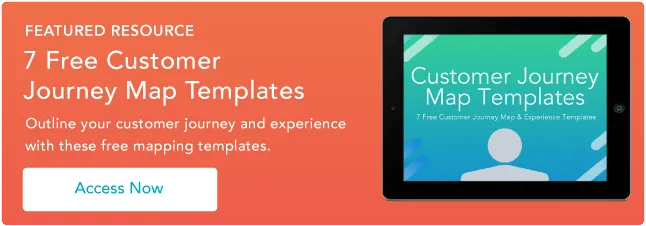
Don't forget to share this post!
Related articles.

7 Crucial Questions to Ask Prospects Throughout the Buyer's Journey, According to HubSpot's Sales Director

The 8 Buyer Motives Every Salesperson Should Know

How to Win More Sales With An Optimized Distribution Strategy
![buyer journey uitleg What the Buyer's Journey Looks Like in 2022 [+3 Data-Driven Ways You Can Keep Up]](https://blog.hubspot.com/hubfs/buyers%20journey%20%281%29-1.jpg)
What the Buyer's Journey Looks Like in 2022 [+3 Data-Driven Ways You Can Keep Up]

B2C Sales: A Comparison With B2B and How to Do Them Right
![buyer journey uitleg How to Craft Tailored Recommendations For Prospects [Free HubSpot Sales Training Excerpt]](https://blog.hubspot.com/hubfs/00-Blog_Thinkstock_Images/how-to-advise-prospects-video.jpg)
How to Craft Tailored Recommendations For Prospects [Free HubSpot Sales Training Excerpt]

9 Ways Salespeople Can Provide Value to Prospects at Every Stage of the Buyer’s Journey
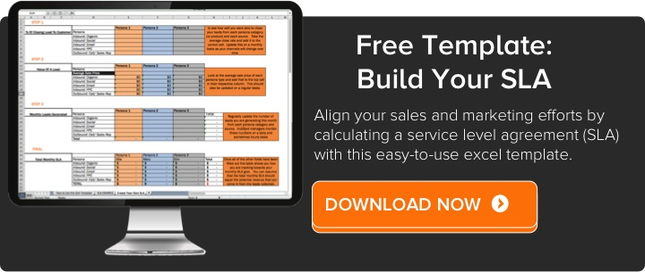
When To Use Customer Case Studies in the Sales Process
Outline your company's customer journey and experience with these 7 free customer journey map templates.
Powerful and easy-to-use sales software that drives productivity, enables customer connection, and supports growing sales orgs

Learn new skills, connect in real time, and grow your career in the Salesblazer Community.
What Is the Buyer’s Journey — and Why Should You Care About It?
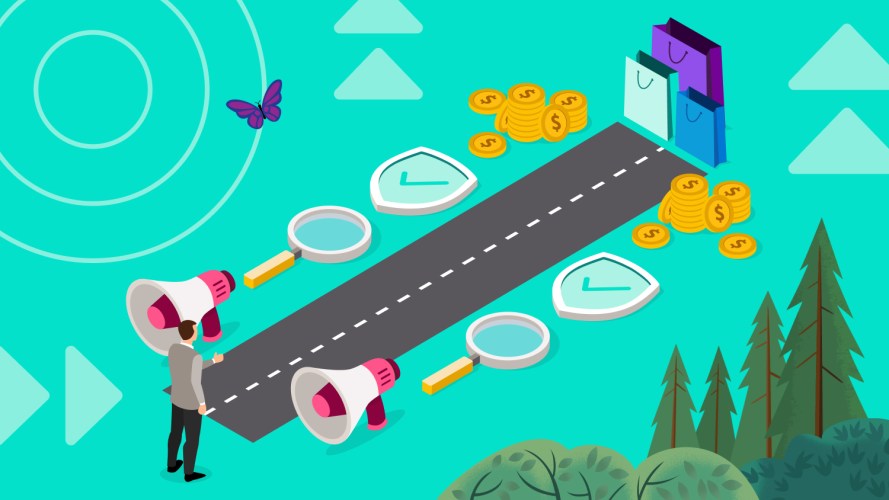
Learn how to map out your buyer's journey to improve the path to purchase.

Erin Hueffner
Share article.
Today’s buyers are more informed than ever. In fact, 81% of reps say customers are conducting their own research before they ever connect with sales. Canned scripts and one-size-fits-all methods won’t cut it when dealing with savvy buyers — they want more detailed information, more personalized solutions, and a tailored sales approach. That’s why it’s so critical to understand the buyer’s journey. Once you know what a prospect needs to move from interest to purchase, you navigate the sales road with ease and close quickly.
Here’s how you get there.
What you’ll learn:
What is the buyer’s journey, what are the stages of the buyer’s journey, why is understanding the buyer’s journey important, how does the buyer’s journey relate to the lead funnel, how to tailor your sales process to the buyer’s journey, buyer’s journey example, drive pipe faster with a single source of truth.
Discover how Sales Cloud uses data and AI to help you manage your pipeline, build relationships, and close deals fast.

The buyer’s journey accounts for all the steps a customer takes to move from discovery for a product to purchase. This includes their behaviors and attitudes toward your brand and how they interact with your marketing and, eventually, your product or service.
This journey is typically segmented into three stages: awareness, consideration, and decision. Don’t assume, however, that every buyer steps through those three stages in 1-2-3 order every time. Buyers’ journeys often wind up taking very non-linear paths. We’ll get into that below.
As noted above, the buyer’s journey can be summed up in three stages. Each stage factors in the psychological state of the buyer, including their needs, behaviors, and decision-making processes. These help inform the actions a seller can take to move the deal forward. Let’s take a closer look at each one:
Awareness stage
Buyers at the awareness stage want something that solves a problem or meets a need, but they don’t know exactly what that is. They start to gather information about solutions, but this information is driven by knowledge of a specific product, service, or brand. Typically, this research involves online research or conversations with others dealing with similar problems/needs.
Tip: At this stage, it’s all about making a strong and credible first impression that lays the groundwork for a relationship based on trust and value. How? By focusing on solutions. Don’t pitch a product — solve a problem. This is when your marketing content, especially on social media, can shine. Video content is a great way to answer questions, provide examples, share testimonials, and deliver in-depth information that promises a helpful solution. As part of this, you’ll want to gently introduce your product — while keeping the focus on the solution it offers, not the features it includes.
Consideration stage
As buyers move into this stage, they are actively researching, comparing, and considering different options. Online shopping and review sites, social media, and email newsletters give customers multiple channels to explore. Take advantage of these by making them next steps in the buyer journey. If you find the buyer is engaging with awareness content like a blog post, for example, create a promo for a newsletter signup in the post to encourage continued engagement.
Tip: Engage potential customers in this stage by providing detailed, comparative, and solution-focused content like blog posts and personalized emails that highlight the unique benefits and features of your offerings.
Decision stage
By now, buyers understand their problem, have done their research, and are ready to make a purchase — but they haven’t crossed the finish line yet. Everything they’ve explored up to now, including price, value, features, benefits, customer reviews, and brand reputation, will be considered and factored into their final decision. The seller’s job? Package all of these as part of the original solution the buyer was looking for.
Tip: In this crucial stage, you want to address any remaining concerns and help the buyer make a purchase decision. To overcome objections , your interactions with customers should be persuasive, reassuring, and clear. Reinforce the value and benefits of your offering. Remember: Selling a solution rather than a product can help set you apart from competitors.
Trending Articles

3 Ways Generative AI Will Help Marketers Connect With Customers

Learn AI Skills on Trailhead
More than just a throwaway sales concept, the buyer’s journey lets you see and understand the choices your buyers make at each stage of the sales process so you can meet their needs in the moment. Understanding the buyer’s journey can give you:
- Enhanced customer insights: Studying the buyer’s journey gives you a deeper understanding of your customers’ needs, pain points, and decision-making processes. This data then helps you create content and strategies that resonate with potential customers.
- Improved content strategy: By knowing what buyers think and want at each stage, you can create content that addresses specific concerns and questions. The right content can provide the guidance customers need to make informed decisions and can also help you field objections.
- Increased sales efficiency: With insights from the buyer’s journey, you can anticipate needs, counter objections quickly, and tailor pitches more effectively. You’re not just selling. You’re providing solutions and guidance at the moment the buyer is most receptive.
- Enhanced customer experience: When you anticipate and address needs at each stage of the journey, you deliver a smoother, more personalized customer experience. This not only increases the likelihood of conversion but also fosters loyalty, leading to repeat business and referrals.
Understanding the buyer’s journey is a key part of building lasting relationships with customers. It’s about moving beyond sales to build genuine connections based on trust and value and ensuring satisfaction at every touchpoint. This ultimately redounds to the seller’s benefit; with strong relationships and loyalty often come repeat sales.
The lead funnel and the buyer’s journey look at the sales process from different perspectives. The lead funnel represents the process from a seller’s or company’s perspective. It outlines the stages a seller walks through on the way to a close. In contrast, the buyer’s journey sees things from the customer’s perspective. It’s all about their experience on the path to purchase.
Aligning your sales process with the buyer’s journey ensures that you meet customer needs at each stage and can guide them toward a purchase decision without delays. Let’s combine what we’ve learned so far into actionable items:
Awareness stage actions
• Understand your audience: Identify and analyze your potential customers’ needs and behavior. Pro tip: Use your CRM to help! An AI-powered tool such as Sales Cloud Einstein can do a lot of the heavy lifting for you via prompt-based research.
• Generate awareness: Use educational content to draw prospects in and establish your brand as a credible source.
Consideration stage actions
- Provide more details product content: Offer comparative, solution-focused content that highlights your product’s benefits.
- Personalize communication: Tailor your interactions with information you’ve gathered about your potential customers.
Decision stage actions
- Address objections: Prepare your team to counter any concerns or objections with clear and compelling information.
- Simplify the purchase: Streamline the buying process, offer clear pricing, and be transparent about contracts.
Get articles selected just for you, in your inbox
The buyer’s journey is not linear. It’s a fluid relationship between brand and customer. Here’s an example that illustrates this:
Raina wants to cut down on her bills and realizes there’s an opportunity to cut down her monthly entertainment spend. Rather than pay for streaming services and cable TV, she wants something that consolidates both.
To start, Raina maps out what she wants. She lists her must-watch shows and researches which streaming platforms offer them (awareness). She narrows her choices to two platforms, including one ad-supported and one premium service. She’s also thinking about adding a live sports package but isn’t clear on which packages carry her favorite teams’ games, so she contacts the streaming service companies for more information (consideration). After chatting with several sales representatives, Raina asks for a demo of one of the service’s sports add-ons. She and the rep discuss subscription plans and go over which games will be available for streaming.
Ultimately, Raina decides to subscribe to both streaming platforms without the additional sports package (decision). Lucky for her, she’s offered a free three-month trial of the live sports add-on at sign-up. After realizing how much she enjoys the add-on in the trial period, Raina decides to keep it.
In this case, Raina’s buyer journey doesn’t end after her purchase. Her experience with the streaming services will influence how she feels about the brands and shape her future interactions with them, including future purchases.
Map to the buyer’s journey for better outcomes
If you pay close attention to the buyer’s journey and deliver high value, your customers are more likely to stay loyal and explore other products in your portfolio, which means more sales. Remember, each interaction with a prospect is an opportunity to understand, engage, and nurture. By aligning your sales process with each stage in the buyer’s journey, you can increase sales while building long-term relationships.
Want to take the #1 CRM for a test drive?
Go on our Guided Tour to see how Sales Cloud boosts productivity at every stage of the sales cycle.

Just For You

Keep it Brief: How to Write Subject Lines for Sales Emails that Actually Get Opened

4 Types of Channel Partnerships and How to Find Them

Explore related content by topic
- Sales Fundamentals
- Salesblazer

Erin Hueffner is a writer from Madison, Wisconsin. Her career spans two decades in tech, journalism, and content marketing. At Salesforce, Erin’s work focuses on sales fundamentals and best practice content for Salesblazers. Erin has a bachelor’s degree in English from the University of ... Read More Wisconsin-Madison.
Get the latest articles in your inbox.

My Sales Went Through the Roof — Then I Hit Rock Bottom

7 Sales Tools You Should Be Using Right Now

How to Write a Change of Commission Letter (with Example)

We Are Refreshing Our Visual Design. Here’s How It Helps You Work Faster

How to Start a Small Business in 10 Steps

How to Use Stephen Covey’s Circle of Influence to Create Impactful Comp Plans

5 Keys to Building a Commission Plan That Motivates Reps and Helps You Hit Revenue Targets

What Is Key Account Management — and How Does It Help You Grow?

New to Salesforce?
- What is Salesforce?
- Best CRM software
- Explore all products
- What is cloud computing
- Customer success
- Product pricing
About Salesforce
- Salesforce.org
- Sustainability
Popular Links
- Salesforce Mobile
- AppExchange
- CRM software
- Salesforce LIVE
- Salesforce for startups
- América Latina (Español)
- Brasil (Português)
- Canada (English)
- Canada (Français)
- United States (English)
Europe, Middle East, and Africa
- España (Español)
- Deutschland (Deutsch)
- France (Français)
- Italia (Italiano)
- Nederland (Nederlands)
- Sverige (Svenska)
- United Kingdom (English)
- All other countries (English)
Asia Pacific
- Australia (English)
- India (English)
- Malaysia (English)
- ประเทศไทย (ไทย)
© Copyright 2024 Salesforce, Inc. All rights reserved. Various trademarks held by their respective owners. Salesforce, Inc. Salesforce Tower, 415 Mission Street, 3rd Floor, San Francisco, CA 94105, United States
- Case studies
- Expert advice
What is the buyer journey? Definition, stages, and examples
Step into the realm where choices weave the intricate fabric of consumer decisions — the buyer journey. As we navigate this landscape, we'll uncover the definition, stages of such a journey, and real-world examples that demystify the process.
Join us on this expedition — no fluff, just the essential roadmap to unravel the buyer journey and decode the patterns that drive purchasing decisions.
Ready to explore the journey that transforms curiosity into commerce? Let's unravel the layers together.
- 1.1 Why is the buyer journey important?
- 2 Buyer journey stages
- 3 Buyer journey optimization
- 4.1 Amazon and its seamless e-commerce experience
- 4.2 HubSpot and its inbound marketing excellence
- 4.3 Buyer journey templates
- 5.1 Key takeaways
What is the buyer journey? Why is it important?
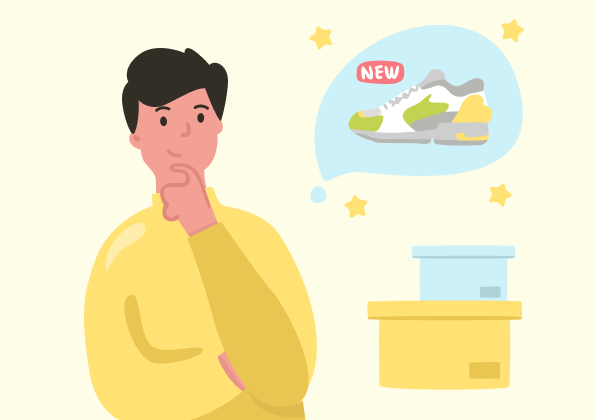
The buyer journey represents the holistic path a buyer takes as they move through the various stages leading to a purchase. It’s a comprehensive process that encapsulates the entirety of a customer's experience, from the initial awareness of a product or service to the final decision-making and post-purchase evaluation. The depth and complexity of such a journey are heightened by the fact that it can be online, offline, or a mix of both. Here are the examples:
- Online journey: A customer discovers a digital product through a targeted social media ad, researches online reviews, and makes a purchase on an e-commerce website. Post-purchase, they use the online product and engage with the brand through email newsletters and online customer support.
- Offline journey: A customer learns about a product through a traditional print advertisement, visits a physical store to explore the item, consults with in-store staff, and makes the purchase. The post-purchase phase involves using the product and potentially providing feedback through physical channels.
- Mixed journey: A customer first encounters a product via an online influencer's review, then visits a brick-and-mortar store to examine it physically. They might purchase online using a mobile app, receiving post-purchase updates through both email and in-store promotions.
Why is the buyer journey important?
Understanding the buyer journey is of paramount importance for businesses for many reasons.
- Customer-centric approach
By comprehending the buyer journey, businesses can adopt a more customer-centric approach. It means aligning products, services, and digital marketing efforts with the needs and preferences of the customers at each journey stage . This customer-centricity fosters a positive and engaging experience, enhancing the likelihood of conversion.
- Tailored marketing strategies
The buyer journey provides businesses with insights into the specific touchpoints and channels that customers engage with during their decision-making process. Armed with this knowledge, organizations can tailor their marketing strategies to be more effective at each stage. For instance, deploy inbound marketing and educational materials to capture attention, especially during the awareness stage.
- Building trust and credibility
Trust is a crucial element in any purchase decision. Understanding a buying journey enables businesses to build trust by delivering consistent messaging, quality content, and positive interactions at each touchpoint. This trust-building process is vital for establishing credibility and driving long-term customer relationships.
- Optimizing user experience
A seamless and enjoyable user experience is critical to guiding potential buyers through the journey. With buyer journey analysis, businesses can identify pain points and areas of improvement in their processes. This could include optimizing website navigation, streamlining checkout processes, or enhancing customer support.
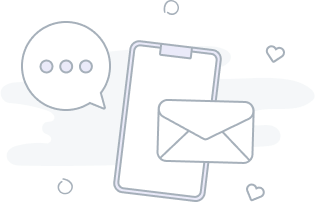
- Data-driven decision-making
The buyer journey map is a valuable source of data that businesses can use to inform their decision-making. Analyzing customer behavior, preferences, and feedback at each stage provides actionable insights. This data-driven approach enables companies to refine their strategies, allocate resources efficiently, and stay agile in a dynamic market.
- Maximizing customer lifetime value
Understanding the buyer journey goes beyond the point of purchase. Post-purchase stages of the journey, such as customer loyalty and advocacy, are crucial for maximizing customer lifetime value. Businesses that continue to engage and delight customers even after the sale are more likely to benefit from repeat business and positive word-of-mouth marketing.
In essence, the buyer journey serves as a roadmap for businesses to navigate the complex landscape of customer decision-making. It empowers companies to meet customer expectations, build lasting relationships, and ultimately drive sustainable business growth.
Buyer journey stages
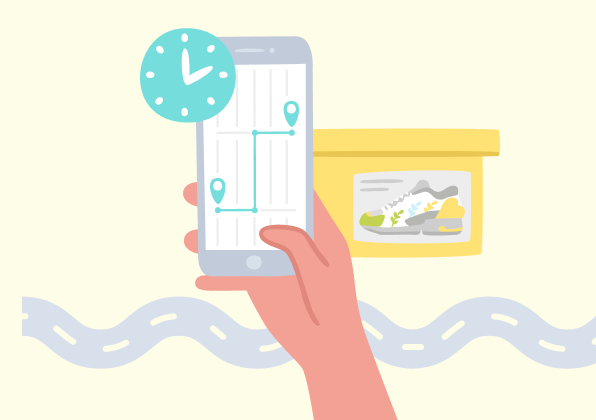
The buyer journey consists of stages a potential customer goes through before making a purchase decision. All journeys are somewhat different, but it's possible to identify broad stages common to each. Let's explore these stages in detail:
- Awareness stage
This is the initial stage where the buyer becomes aware of a problem or need. They may not be aware of specific solutions yet.
Example: Someone realizes they need a new smartphone because their current one is outdated and struggles with performance.
- Research and discovery stage
At this stage, the buyer actively seeks information to understand and define their problem. They research potential solutions and gather relevant data.
Example: The individual might explore various smartphone brands, read reviews, and compare features to find the best fit for their needs.
- Consideration stage
At this point, the buyer narrows down their options and is evaluating specific products or services. They compare features, prices, and benefits.
Example: The person may be deciding between two or three smartphone models based on factors like camera quality, battery life, and overall performance.
- Decision stage
The buyer is now ready to make a decision and commit to a particular product or service. They might look for discounts, compare final prices, and explore additional incentives.
Example: The individual decides to purchase a specific smartphone model, adds it to the cart, and proceeds to check out.
- Purchase stage
This is the point of transaction where the buyer completes the purchase. It could happen online, in-store, or through various other channels.
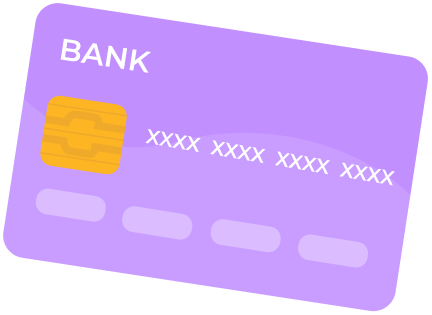
Example: The person confirms the purchase, enters payment information, and receives confirmation of the order.
- Post-purchase stages
After the purchase, the buyer uses the product or service and forms their experience about it. This stage is crucial for customer satisfaction and potential loyalty.
Example: The individual starts using the new smartphone, and their experience is positive. They might leave a review, share their experience on social media, or consider the brand for future purchases.
- Loyalty and advocacy stage
There is an additional stage focusing on turning customers into loyal advocates. This involves fostering ongoing relationships, encouraging repeat business, and leveraging satisfied customers for viral marketing. This stage is often overlooked by businesses, and it's a mistake.
Example: The satisfied smartphone user recommends the brand to friends, engages with loyalty programs, and becomes an advocate for the product.
Read also: How to create a journey map step-by-step + examples
Understanding and visualizing these stages allows businesses to tailor their marketing, sales, and customer support strategies to address customers' specific needs and concerns at each step. It helps create a more personalized and effective approach, ultimately increasing the likelihood of conversion and building long-term customer relationships.
Buyer journey optimization
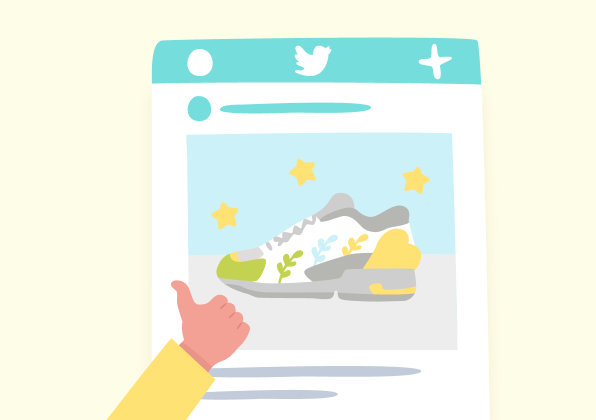
Buyer journey optimization involves refining and enhancing the various stages of the customer's path to purchase to improve overall efficiency, effectiveness, and customer satisfaction and experience.
By strategically optimizing each stage of the journey, businesses can maximize conversion rates, build stronger customer relationships, and increase long-term loyalty. Here's a detailed exploration of buyer journey optimization with examples and potential outcomes:
- Data-driven analysis
Example: A company collects and analyzes data on customer behavior, interactions, and preferences at each stage of the buyer journey using analytics tools and customer relationship management (CRM) systems.
Outcome: Insights gained from data analysis help businesses identify patterns, pain points, and opportunities for improvement in the buyer journey.
- Personalized content and messaging
Example: Leveraging data insights, a business tailors its content and messaging to match the preferences and needs of specific buyer personas at different stages of the journey.
Outcome: Personalized content increases engagement and resonates more effectively with potential customers, leading to a higher likelihood of conversion.
- Seamless multichannel experience
Example: An e-commerce platform ensures a consistent and seamless experience for customers across various channels, including online platforms, mobile apps, and physical stores.
Outcome: A unified multichannel experience reduces friction, enhances customer satisfaction, and provides a cohesive journey regardless of the chosen interaction channel.
- Optimized website and user experience
Example: A company invests in user experience design , making its website intuitive, easy to navigate, and optimized for both desktop and mobile users.
Outcome: Improved website usability enhances customer satisfaction, reduces bounce rates, and encourages visitors to move smoothly through the buyer journey.

- Marketing automation
Example: Implementing digital marketing automation tools to deliver targeted and timely messages, such as personalized emails, based on customer behavior and interactions.
Outcome: Marketing automation streamlines communication, helps to nurture leads, and ensures that potential customers receive relevant information at the right moment in time, increasing the chances of conversion.
- Streamlined checkout process
Example: An e-commerce platform simplifies its checkout process, minimizing the number of steps required and offering various payment options.
Outcome: A streamlined checkout process reduces cart abandonment rates and friction during the purchase stage, leading to higher conversion rates.
- Post-purchase engagement
Example: After a customer makes a purchase, a business engages in post-purchase communication, seeking feedback, offering support, and providing additional resources or exclusive offers.
Outcome: Positive post-purchase engagement contributes to customer satisfaction, encourages repeat business, and fosters brand loyalty.
- Continuous iteration and improvement:
Example: Regularly reviewing analytics, customer feedback, and market trends to identify areas for further optimization and adjustment in the buyer journey strategy.
Outcome: Continuous iteration ensures that the buyer journey remains responsive to changing customer needs and market dynamics, maintaining high levels of effectiveness over time.
In summary, journey optimization is an ongoing process that requires a combination of data analysis, personalization, technological integration, and a customer-centric mindset. By strategically implementing these optimizations, businesses can create a more seamless, engaging, and efficient journey for their customers, ultimately driving higher conversion rates and long-term customer loyalty.
Buyer journey examples
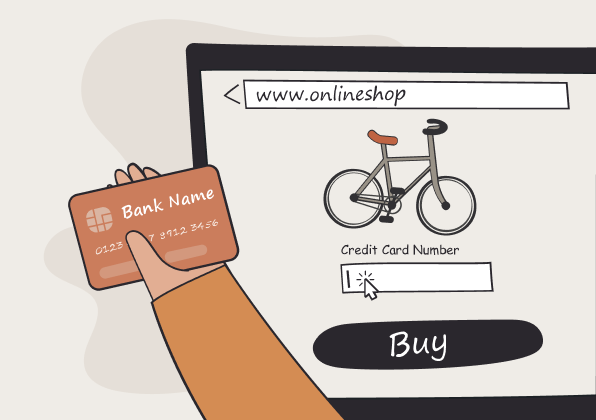
Let's consider a couple of examples of buyer journeys in well-known companies, what they do to improve it, and how it works in practice.

Amazon and its seamless e-commerce experience
Even if you don't use Amazon products, you've definitely heard about them.
Amazon excels in creating awareness through targeted ads, personalized recommendations, and a vast product catalog. For example, if a user searches for a specific product, Amazon's algorithms provide relevant suggestions, increasing the chances of discovery.
The product pages on Amazon are rich in information, featuring detailed product descriptions, customer reviews, and frequently asked questions. This assists customers in making informed decisions during the research stage.
Amazon leverages personalized recommendations and targeted emails to remind users about products they viewed or added to their cart. Special promotions, such as lightning deals, create a sense of urgency, influencing the decision-making process.
The one-click purchase option streamlines the decision-making process, offering a frictionless checkout experience. Amazon's transparent shipping and return policies contribute to the customer's confidence in their decision.
- Post-purchase stage
Amazon invests in post-purchase engagement through order tracking, delivery notifications, and follow-up emails. Additionally, their customer service is readily available to address any issues, enhancing post-purchase satisfaction.
HubSpot and its inbound marketing excellence
HubSpot is a comprehensive inbound marketing, sales, and customer service platform designed to help businesses attract, engage, and delight customers. And they do delight.
HubSpot built a robust online presence through inbound marketing. Their blog, webinars, and downloadable resources provide valuable information, attracting businesses looking for marketing and sales solutions.
HubSpot offers free tools, such as CRM and marketing analytics, allowing users to explore and understand the platform's capabilities before making a commitment. Their educational content assists businesses in the research stage.
HubSpot's sales team engages with potential customers through personalized email outreach, offering product demonstrations, and addressing specific pain points. This approach helps businesses evaluate HubSpot's fit for their needs.
HubSpot's pricing transparency and scalable solutions cater to businesses of different sizes. They provide flexible payment options and a clear onboarding process, making it easier for businesses to decide.
HubSpot focuses on customer success through continuous education, regular updates on new features, and a vibrant community. They encourage users to maximize the platform's potential, fostering long-term loyalty.
These examples showcase how companies like Amazon and HubSpot strategically engage with customers at each stage of the buyer journey, leading to successful conversions and sustained customer relationships.
Buyer journey templates
Visual aids can often speak louder than words. Therefore, here are some templates for various scenarios. They'll be a great asset to your initiative.
- Case 1: A bicycle buyer journey, where a potential buyer, filled with excitement and a quest for the perfect bicycle, navigates the online realm in search of their two-wheeled companion.
- Case 2: An offline grocery buyer journey, where our persona embarks on the classic journey to the neighborhood supermarket, weaving through aisles in search of sustenance and delights.
- Case 3: A sneakers' buyer journey, where a persona sets out to find the ideal pair of sneakers, exploring the vast world of online options and paving the way for stylish strides.
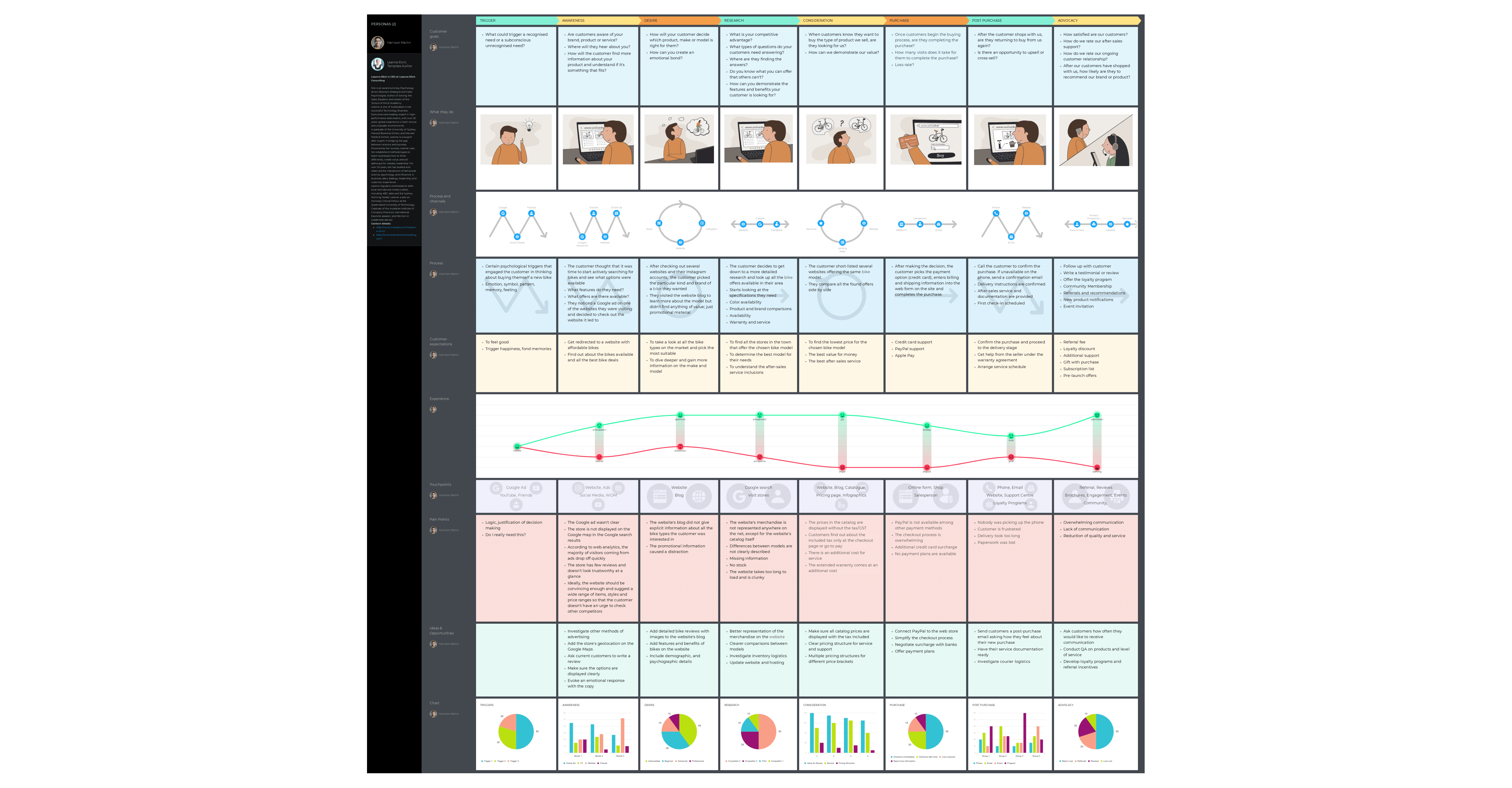
Wrapping up
In unraveling the complexities of the buyer journey, we've delved into its definition, stages, and real-world examples. This journey is not merely a linear path from awareness to purchase; it's an intricate process that demands a nuanced understanding of customer behavior.
Key takeaways
- Businesses must align products, services, and marketing efforts with customer needs at each stage, fostering positive and engaging experiences.
- Analyzing the buyer journey provides valuable data for refining strategies, optimizing user experiences, and staying agile in a dynamic market.
- Building trust through consistent messaging, quality content, and positive interactions is crucial for establishing credibility and fostering long-term relationships.
- The journey doesn't end with a purchase; positive post-purchase experiences contribute to customer satisfaction, loyalty, and advocacy.
- Buyer journey optimization is an ongoing process involving data analysis, personalization, technological integration, and a customer-centric mindset.
As we navigate the ever-evolving landscape of consumer decisions, understanding and effectively leveraging the buyer journey is not just a strategy; it's a fundamental approach that can drive sustainable business growth. So, let's continue to unravel the layers of this intricate journey, adapting and refining our strategies to meet the ever-changing needs of our customers.
Related posts
Rate this post

Buyer Journey
The buyer journey is the process a customer goes through, from becoming aware of a problem or need to ultimately making a purchase decision. Understanding the buyer’s journey is vital for businesses to develop effective marketing campaigns, tailor their sales strategies, and optimize their customer acquisition funnel. It’s a fundamental concept in marketing and sales.
Stages of the Buyer’s Journey
The buyer’s journey can be broken down into three main stages.
Awareness Stage
This is where the customer first realizes they have a problem or need. They might be experiencing pain points or searching for ways to improve their situation. At this stage, customers are likely conducting broad online searches or consuming informative content to gather general knowledge.
Consideration Stage
Once the customer understands their need, they enter the consideration stage. Here, they actively research potential solutions and compare different options available in the market. This might involve reading reviews, comparing product features, or downloading whitepapers and case studies.
Decision Stage
In the final stage, the customer has identified a shortlist of potential solutions and is ready to make a purchase decision. They will closely evaluate each option based on factors like price, features, brand reputation, and customer service. This stage might involve requesting demos, negotiating prices, or seeking final confirmation before closing the deal.
Buyer Journey Mapping
Buyer journey mapping is a strategic tool used to visualize the customer’s experience throughout the buyer’s journey. It involves creating a flowchart or diagram that outlines the different stages (awareness, consideration, decision), customer actions and touchpoints at each stage, and their thoughts and feelings throughout the process.
Some benefits of buyer journey mapping include:
- Identify customer needs and pain points at each stage.
- Pinpoint gaps or obstacles in the customer experience.
- Align marketing, sales, and content efforts with each stage of the journey.
- Develop targeted campaigns and messaging that resonate with potential customers.
- Optimize the customer acquisition funnel for improved conversion rates.
Benefits of Understanding the Buyer’s Journey
By understanding the buyer’s journey, businesses can gain a significant advantage in today’s competitive marketplace. Here are some key benefits.
- Targeted Marketing Campaigns: Tailoring marketing messages to each stage of the buyer’s journey allows businesses to reach potential customers with the right information at the right time. This increases campaign effectiveness and maximizes return on investment.
- Tailored Sales Pitches: Sales teams equipped with knowledge of the buyer’s journey can adapt their approach to better address customer needs and objections at each stage. This leads to more qualified leads, improved conversion rates, and stronger customer relationships.
- Effective Content Strategies: Creating content that aligns with the buyer’s journey stages ensures it resonates with the target audience. Businesses can develop informative content for the awareness stage, solution-oriented content for the consideration stage, and comparison guides or case studies for the decision stage. This approach fosters trust and positions the business as a valuable resource throughout the buying process.
- Optimized Customer Acquisition Funnel: Understanding the buyer’s journey allows businesses to identify and remove any friction points within their sales funnel. This optimization ensures a smoother customer experience, leading to higher conversion rates and improved customer lifetime value.
Buyer’s Journey Example
Let’s imagine a company that sells marketing automation software.
Awareness Stage: In this stage, potential customers might be experiencing challenges like managing multiple marketing channels or struggling to measure campaign effectiveness. They might search online for terms like “marketing automation benefits” or “solutions for marketing campaign management.” The software company can target them with informative blog posts or ebooks that explain the pain points of manual marketing and introduce marketing automation as a potential solution.
Consideration Stage: Once aware of marketing automation, potential customers will research different software options. They might compare features, pricing plans, and user reviews. The software company can provide detailed product information, whitepapers that showcase the software’s capabilities, and customer case studies that demonstrate successful implementations.
Decision Stage: In the final stage, potential customers might shortlist a few marketing automation solutions. They might request product demos, compare pricing quotes, or reach out to the sales team with specific questions. The software company can offer personalized demos tailored to the customer’s needs, address any concerns directly, and provide clear value propositions to help them make an informed decision.
Related Terms
- Buyer persona
- Inbound marketing
- Content marketing
Learn More About the Buyer Journey
- 5 Steps to Finding Content Gaps in the Buyer Journey
- Customer Journey Planning: How to Save time and Publish Better Content
- 6 Different Types of Buyer Journey Maps – Kapost
13 juni: HubSpot User Day: Commercial excellence door efficiënt data beheer 💡

- Transformeer je business met HubSpot
- HubSpot implementaties & migratie
- HubSpot support & training
- HubSpot Smart CRM
- Service Hub
- Marketing Hub
- Content Hub
- Operations Hub
- Integraties
- Unlock Managed services
- Captains Dinners
- HubSpot User Days
- Digital Future of B2B
- RFP/RFI inzenden
Buyer journey: breng fases van klantreis in beeld
70% van het aankoopproces in de B2B vindt tegenwoordig online plaats. Dat wil zeggen dat je toekomstige klant op internet op zoek gaat naar antwoorden op vragen, lang voordat hij of zij in contact komt met een verkoper van je bedrijf. Zaak is om - ook in de vroegste stadia van het aankoopproces - in de 'consideration set' van je doelgroep te komen. De buyer journey ( klantreis ) helpt je hierbij.
- de klantreis begrijpen is de eerste stap richting het creëren van waardevolle content die aansluit bij het aankoopproces datje b2b klanten doorlopen. dit is de basis van inbound marketing, marketing waar je klanten blij van worden. -, buyer journey: de klantreis.

1. Awareness fase
De prospect ervaart een specifiek probleem en staat voor bepaalde uitdagingen, maar kan deze nog niet benoemen. In deze fase van de buyer journey doet hij of zij onderzoek om het probleem of de uitdaging duidelijk te formuleren en te kaderen. Er wordt nog geen koopbeslissing genomen (daar is het te vroeg voor in het aankoopproces).
2. Consideration fase
Het probleem of de uitdaging is helder geformuleerd. De prospect doet verder onderzoek naar mogelijke benaderingen en methodes om het probleem uit de weg te ruimen/ de uitdaging om te zetten naar een kans voor het bedrijf. Er wordt een longlist of een shortlist gemaakt met mogelijke oplossingen. In deze fase in de buyer journey is het zaak om met jouw bedrijf op deze lijst te komen!
3. Decision fase
In deze fase van de buyer journey heeft de prospect een benadering of strategie gekozen en stelt nu een lijst op van mogelijke aanbieders die de oplossing voor het probleem kunnen bieden. Na alle aanbieders met elkaar te hebben vergeleken wordt uit de lange lijst uiteindelijk één aanbieder gekozen.
Kennisbehoeftes in het aankoopproces

Stem jouw marketing-activiteiten af op het aankoopproces: breng de klantreis in beeld
De buyer journey, dus de klantreis in kaart brengen is de basis van iedere Inbound Marketing strategie. Leren hoe je met Inbound Marketing meer gekwalificeerde leads binnenhaalt? Download de whitepaper: Beter zaken doen met Inbound Marketing . Buyer persona: onmisbaar voor het begrijpen van de klantreis De buyer journey is, samen met de buyer persona onderdeel van iedere goede inbound marketing strategie. Om te weten aan welke informatie je doelgroep behoefte heeft in de verschillende fasen van het aankoopproces, dien je namelijk eerst de verschillende beslissers en beïnvloeders aan de klantzijde te (her)kennen en begrijpen. Hiervoor stel je buyer persona's op.

Want to stay updated on all HubSpot changes? Subscribe to our newsletters, follow us on Instagram or join our HubSpot User Days!
You May Also Like
These Related Stories
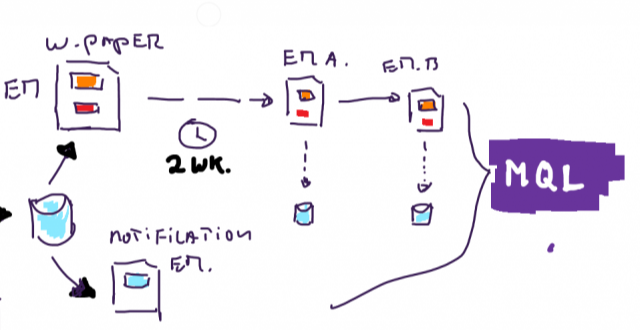
Leadgeneratie in B2B: Effectief leads genereren, hoe dan?

Is je HubSpot omgeving al GDPR-proof?
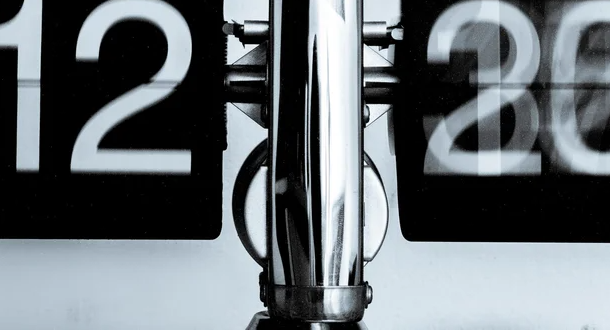
De meerwaarde van Marketing: Zet de klok gelijk met Sales
Subscribe to Our Blog
Stay up to date with the latest marketing, sales, and service tips.
What Is the Buyer's Journey? 18 Questions You Need to Ask (+ Template)

Douglas Phillips | November 21, 2023 | Buyers Journey | 10 min read
Quick Links
- 1. What Is It?
- 2. Stages and Questions
- 3. Defining Your Journey
- 4. Template
- 5. Impact on Content
All marketing springs from your knowledge of your customers.
For modern digital marketers – especially those who embrace the inbound way – that starts by gathering all your knowledge about your customers-to-be.
The buyer persona is your tool for figuring out who the customer is and what is important to him or her. This is a great start, but it only tells part of the story.
To grasp how prospects act in the real world, you’ve got to find a way to put that prospective buyer in motion. The buying process never stands still: There’s always something happening, even if some of it is "behind the scenes."
The buyer's journey is where that movement happens.
What Is the Buyer's Journey?
In theory, the buyer's journey includes everything from the moment the prospect knows there’s a problem that needs to be solved until shortly after they complete a purchase.
To turn the buyer's journey into a practical tool for planning marketing campaigns, you need to see it in terms of three stages.
What Are the Buyer's Journey Stages? Questions for Each
The three stages of the buyer's journey break down to awareness, consideration, and decision.
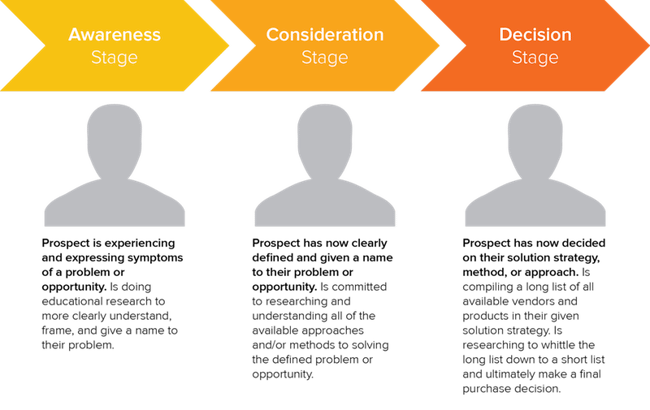
Source: HubSpot
No matter how complicated the buying process gets—what websites they check, how many options they compare, or whether they ask for advice from random people that they know—all prospects will reach these three milestones.
Let’s look at the steps and some core questions to ask for each one.
Awareness Stage
Awareness starts when the prospect realizes there’s a problem he or she should address.
It could be a big, complex business problem – like ensuring end-to-end tracking for components throughout the supply chain. Or, it could be a simple and personal problem: Not being able to fall asleep at night despite being tired.
When awareness strikes, most modern consumers go online right away.
Everyone knows that when they want to solve a problem or answer a question, the web provides them with unparalleled resources. In fact, the vast majority of purchases start with a generic search stating the problem as the prospect understands it.
At this stage, they’re a lot more interested in figuring out what’s going wrong than they are in looking at their specific options for fixing it. They’re likely to click on whatever content seems to be relevant, only evaluating the quality of the source after reading.
Awareness lasts for about as long as it takes the person to define the problem in specific terms. Once they have better words for describing what they’re dealing with, they’ll move on to the next phase. Luckily, this is usually obvious from a marketer’s perspective.
Why? Their search queries start to use more domain-specific language. That is, they start to apply the jargon that goes with their problem.
Questions to Ask Yourself
- How do people first discover they have a problem we can help with?
- What terms are they likely to use when they first notice the problem?
- What sources—online or offline—will they go to for reliable input?
- What misunderstandings are they likely to have on the subject?
- What knowledge gaps will they have that need to be filled?
- What kinds of content are prospects most likely to pay attention to?
Consideration Stage
The consideration phase begins when the problem has been defined.
Imagine you come from an alternate universe where the common cold is, well, uncommon. You could have all the regular symptoms—coughing, sneezing, congestion, and more—and not know exactly what the problem is. What’s more, you’d be bound to encounter many alternative explanations of your symptoms that wouldn’t help you at all.
Once you have the weird, specialized word "cold," you can drill deeper. And that’s exactly what people in the consideration phase are doing.
They know they have a problem, and now they want to know how they can solve it. This usually means starting to gather a list of potential actions they could take, which, in any situation more complicated than scratching an itch, usually means learning about vendors who can help.
But they’re not just learning about the different companies that offer solutions to their challenge.
They’re also establishing buying criteria, ways of knowing what kind of outcomes they should expect, and what features they need in a solution. If you’re buying a certain category of goods or services for the first time, this information is absolutely essential.
Smart marketers can help prospects go straight from awareness to consideration without ever leaving their own website. They do it with helpful, informative inbound marketing content that guides the user through the buyer's journey stages seamlessly.
- What solutions are prospective buyers likely to gravitate towards first?
- What are the major advantages or benefits compelling to buyers?
- What are the major concerns or disadvantages that put buyers off?
- What factors persuade a buyer that a solution is right for them?
- Who do buyers trust when it comes to the topic the solution is related to?
Decision Stage
In the decision phase, prospects know what type of solution they need. They’re clear about their buying criteria.
They even have a list of potential vendors. However, that list isn’t likely to be exhaustive. It consists mostly of companies that have helped in the journey so far.
Now, they apply the buying criteria to make a final decision on what to buy.
This can be the shortest and easiest step, or it could drag on seemingly forever. In large, complex decisions affecting a whole enterprise, stakeholders might revisit the inputs to the decision stage many times – and even retreat into the other two steps temporarily.
Content at this stage should show buyers not just why your solution works, but why it will work for them. That means social proof like testimonials and case studies, thought leadership content , on-site demonstrations, and discovery sessions.
- What helps one solution stand out from another?
- What kind of “proof” are prospects looking for?
- Who needs to be involved in the final decision?
- What pre-implementation preparation is needed?
- Why should buyers choose my solution?
- Is there a next step after the sale is completed?
- How can I delight my buyers?
Remember, any buyer behavior fits within the three-step buyer's journey. Keep your process simple and streamlined by laser-focusing on them and you’ll see how they consistently clear things up. That leads to repeatable planning processes for new products and new personas in the future.
How to Define Your Company's Buyer's Journey
Defining this journey for your company requires some reflection and critical thinking. You need to break your journey up into three stages and describe exactly what your prospects go through.
Follow along with these simple steps.
1. Dig Into What Your Buyers Do During the Awareness Stage.
The end goal for your prospects at this point in their journey is to research the symptoms they're having and actually attribute a name to their problem. You should brainstorm the following points:
This exercise will help you lay out all the information you need to know when you're building a targeted marketing strategy .
2. Step Into Their Shoes for the Consideration Stage.
Next, you want to step into your prospects' perspectives while they're assessing different solutions they want to pursue. Fill out the following points:
By filling out this table, you're gaining a good perspective on how they narrow down their options. When your prospects narrow it down to categories of solutions, they're ready to move onto the decision stage.
3. Hone In On How Buyers Decide to Purchase From You.
Finally, you're ready to learn how your prospects think as they advance toward making a purchase.
When you're at the finish line with prospects, you can really feel the pressure of delivering the right messaging at the right time and in the right way. These details you fill out can help you guide them toward making the right decision for themselves and for you.
4. Put It All Together.
After filling out the buyer's journey details, you need to look at it in its entirety.
This way, you can trace their steps from when they first started expressing symptoms to finally deciding on a solution. And hopefully, that solution comes from you.
When you put all this information together, you gain a strong understanding of how they move through each stage. By learning how they progress, you can identify marketing tactics that help guide them through each stage in an efficient way.
By bringing this information together, you're able to distribute it to your marketing and sales teams and get everyone on the same page. They can learn how to provide value at each stage and nurture them along the journey.
The best way to put it all together is by adding all your information to a buyer's journey template.
Buyer's Journey Template
Download the Bluleadz Buyer's Journey Template to put all your information together in one place. Get your marketing, sales, and customer service teams involved with filling this out.
Every team has great insights on how your current customers find you and make purchases from you. Once you finalize this document, distribute it throughout your company.
This is a great resource for everyone because it gives you opportunities to identify new touchpoints where you can deliver impactful content.
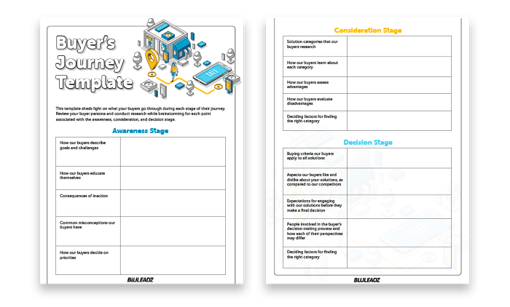
Download your Buyer's Journey Template here ➡️➡️➡️➡️
One of the best ways to use your buyer's journey is planning your content marketing strategy.
How the Buyer's Journey Plays Into Your Content Marketing
A big part of content marketing is determining what kinds of content your target audience needs and when they need it. This comes down to context.
You can plan your content marketing and deliver contextual educational content at the right touchpoints. You need to develop a content map.
With content mapping, your aim is to deliver the right content to the right people at the right time. You know the right people by targeting your buyer personas.
Then, based off of your persona, you can develop content ideas that address their specific needs at the awareness, consideration, and decision stages of their buyer's journey.
The buyer's journey stages align with the concept of the marketing funnel – top of the funnel (TOFU), middle of the funnel (MOFU), and bottom of the funnel (BOFU).
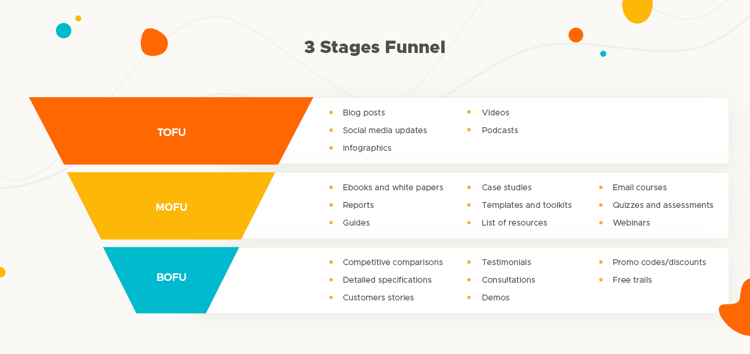
Source: Single Grain
As you can see, there is a lot of opportunity for developing awesome content ideas for each buyer's journey stage.
Your awareness level content (the TOFU stage) is generating awareness for your brand. With consideration content (MOFU), you help your audience with research and comparisons of potential solutions.
Finally, the decision stage content (BOFU) highlights what you have to offer, trying to show them how your solution best fits them.
Ultimately, this process of guiding prospects through the buyer's journey stages requires a lot of time and resources. Once you build a targeted strategy, you're well-equipped to turn curious prospects into happy customers.
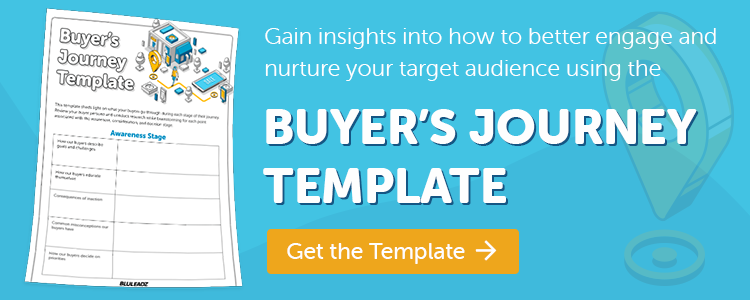
Douglas Phillips
Former military brat, graduated from Leilehua High School in Wahiawa, Hawaii in 2001. After earning my Bachelor's in English/Professional Writing, took on a job as a writer here at Bluleadz.
More Marketing Insights
Can't find what you're looking for try using a keyword..

40 Facts About Elektrostal
Written by Lanette Mayes
Modified & Updated: 17 May 2024
Reviewed by Jessica Corbett

Elektrostal is a vibrant city located in the Moscow Oblast region of Russia. With a rich history, stunning architecture, and a thriving community, Elektrostal is a city that has much to offer. Whether you are a history buff, nature enthusiast, or simply curious about different cultures, Elektrostal is sure to captivate you.
This article will provide you with 40 fascinating facts about Elektrostal, giving you a better understanding of why this city is worth exploring. From its origins as an industrial hub to its modern-day charm, we will delve into the various aspects that make Elektrostal a unique and must-visit destination.
So, join us as we uncover the hidden treasures of Elektrostal and discover what makes this city a true gem in the heart of Russia.
Key Takeaways:
- Elektrostal, known as the “Motor City of Russia,” is a vibrant and growing city with a rich industrial history, offering diverse cultural experiences and a strong commitment to environmental sustainability.
- With its convenient location near Moscow, Elektrostal provides a picturesque landscape, vibrant nightlife, and a range of recreational activities, making it an ideal destination for residents and visitors alike.
Known as the “Motor City of Russia.”
Elektrostal, a city located in the Moscow Oblast region of Russia, earned the nickname “Motor City” due to its significant involvement in the automotive industry.
Home to the Elektrostal Metallurgical Plant.
Elektrostal is renowned for its metallurgical plant, which has been producing high-quality steel and alloys since its establishment in 1916.
Boasts a rich industrial heritage.
Elektrostal has a long history of industrial development, contributing to the growth and progress of the region.
Founded in 1916.
The city of Elektrostal was founded in 1916 as a result of the construction of the Elektrostal Metallurgical Plant.
Located approximately 50 kilometers east of Moscow.
Elektrostal is situated in close proximity to the Russian capital, making it easily accessible for both residents and visitors.
Known for its vibrant cultural scene.
Elektrostal is home to several cultural institutions, including museums, theaters, and art galleries that showcase the city’s rich artistic heritage.
A popular destination for nature lovers.
Surrounded by picturesque landscapes and forests, Elektrostal offers ample opportunities for outdoor activities such as hiking, camping, and birdwatching.
Hosts the annual Elektrostal City Day celebrations.
Every year, Elektrostal organizes festive events and activities to celebrate its founding, bringing together residents and visitors in a spirit of unity and joy.
Has a population of approximately 160,000 people.
Elektrostal is home to a diverse and vibrant community of around 160,000 residents, contributing to its dynamic atmosphere.
Boasts excellent education facilities.
The city is known for its well-established educational institutions, providing quality education to students of all ages.
A center for scientific research and innovation.
Elektrostal serves as an important hub for scientific research, particularly in the fields of metallurgy, materials science, and engineering.
Surrounded by picturesque lakes.
The city is blessed with numerous beautiful lakes, offering scenic views and recreational opportunities for locals and visitors alike.
Well-connected transportation system.
Elektrostal benefits from an efficient transportation network, including highways, railways, and public transportation options, ensuring convenient travel within and beyond the city.
Famous for its traditional Russian cuisine.
Food enthusiasts can indulge in authentic Russian dishes at numerous restaurants and cafes scattered throughout Elektrostal.
Home to notable architectural landmarks.
Elektrostal boasts impressive architecture, including the Church of the Transfiguration of the Lord and the Elektrostal Palace of Culture.
Offers a wide range of recreational facilities.
Residents and visitors can enjoy various recreational activities, such as sports complexes, swimming pools, and fitness centers, enhancing the overall quality of life.
Provides a high standard of healthcare.
Elektrostal is equipped with modern medical facilities, ensuring residents have access to quality healthcare services.
Home to the Elektrostal History Museum.
The Elektrostal History Museum showcases the city’s fascinating past through exhibitions and displays.
A hub for sports enthusiasts.
Elektrostal is passionate about sports, with numerous stadiums, arenas, and sports clubs offering opportunities for athletes and spectators.
Celebrates diverse cultural festivals.
Throughout the year, Elektrostal hosts a variety of cultural festivals, celebrating different ethnicities, traditions, and art forms.
Electric power played a significant role in its early development.
Elektrostal owes its name and initial growth to the establishment of electric power stations and the utilization of electricity in the industrial sector.
Boasts a thriving economy.
The city’s strong industrial base, coupled with its strategic location near Moscow, has contributed to Elektrostal’s prosperous economic status.
Houses the Elektrostal Drama Theater.
The Elektrostal Drama Theater is a cultural centerpiece, attracting theater enthusiasts from far and wide.
Popular destination for winter sports.
Elektrostal’s proximity to ski resorts and winter sport facilities makes it a favorite destination for skiing, snowboarding, and other winter activities.
Promotes environmental sustainability.
Elektrostal prioritizes environmental protection and sustainability, implementing initiatives to reduce pollution and preserve natural resources.
Home to renowned educational institutions.
Elektrostal is known for its prestigious schools and universities, offering a wide range of academic programs to students.
Committed to cultural preservation.
The city values its cultural heritage and takes active steps to preserve and promote traditional customs, crafts, and arts.
Hosts an annual International Film Festival.
The Elektrostal International Film Festival attracts filmmakers and cinema enthusiasts from around the world, showcasing a diverse range of films.
Encourages entrepreneurship and innovation.
Elektrostal supports aspiring entrepreneurs and fosters a culture of innovation, providing opportunities for startups and business development.
Offers a range of housing options.
Elektrostal provides diverse housing options, including apartments, houses, and residential complexes, catering to different lifestyles and budgets.
Home to notable sports teams.
Elektrostal is proud of its sports legacy, with several successful sports teams competing at regional and national levels.
Boasts a vibrant nightlife scene.
Residents and visitors can enjoy a lively nightlife in Elektrostal, with numerous bars, clubs, and entertainment venues.
Promotes cultural exchange and international relations.
Elektrostal actively engages in international partnerships, cultural exchanges, and diplomatic collaborations to foster global connections.
Surrounded by beautiful nature reserves.
Nearby nature reserves, such as the Barybino Forest and Luchinskoye Lake, offer opportunities for nature enthusiasts to explore and appreciate the region’s biodiversity.
Commemorates historical events.
The city pays tribute to significant historical events through memorials, monuments, and exhibitions, ensuring the preservation of collective memory.
Promotes sports and youth development.
Elektrostal invests in sports infrastructure and programs to encourage youth participation, health, and physical fitness.
Hosts annual cultural and artistic festivals.
Throughout the year, Elektrostal celebrates its cultural diversity through festivals dedicated to music, dance, art, and theater.
Provides a picturesque landscape for photography enthusiasts.
The city’s scenic beauty, architectural landmarks, and natural surroundings make it a paradise for photographers.
Connects to Moscow via a direct train line.
The convenient train connection between Elektrostal and Moscow makes commuting between the two cities effortless.
A city with a bright future.
Elektrostal continues to grow and develop, aiming to become a model city in terms of infrastructure, sustainability, and quality of life for its residents.
In conclusion, Elektrostal is a fascinating city with a rich history and a vibrant present. From its origins as a center of steel production to its modern-day status as a hub for education and industry, Elektrostal has plenty to offer both residents and visitors. With its beautiful parks, cultural attractions, and proximity to Moscow, there is no shortage of things to see and do in this dynamic city. Whether you’re interested in exploring its historical landmarks, enjoying outdoor activities, or immersing yourself in the local culture, Elektrostal has something for everyone. So, next time you find yourself in the Moscow region, don’t miss the opportunity to discover the hidden gems of Elektrostal.
Q: What is the population of Elektrostal?
A: As of the latest data, the population of Elektrostal is approximately XXXX.
Q: How far is Elektrostal from Moscow?
A: Elektrostal is located approximately XX kilometers away from Moscow.
Q: Are there any famous landmarks in Elektrostal?
A: Yes, Elektrostal is home to several notable landmarks, including XXXX and XXXX.
Q: What industries are prominent in Elektrostal?
A: Elektrostal is known for its steel production industry and is also a center for engineering and manufacturing.
Q: Are there any universities or educational institutions in Elektrostal?
A: Yes, Elektrostal is home to XXXX University and several other educational institutions.
Q: What are some popular outdoor activities in Elektrostal?
A: Elektrostal offers several outdoor activities, such as hiking, cycling, and picnicking in its beautiful parks.
Q: Is Elektrostal well-connected in terms of transportation?
A: Yes, Elektrostal has good transportation links, including trains and buses, making it easily accessible from nearby cities.
Q: Are there any annual events or festivals in Elektrostal?
A: Yes, Elektrostal hosts various events and festivals throughout the year, including XXXX and XXXX.
Elektrostal's fascinating history, vibrant culture, and promising future make it a city worth exploring. For more captivating facts about cities around the world, discover the unique characteristics that define each city . Uncover the hidden gems of Moscow Oblast through our in-depth look at Kolomna. Lastly, dive into the rich industrial heritage of Teesside, a thriving industrial center with its own story to tell.
Was this page helpful?
Our commitment to delivering trustworthy and engaging content is at the heart of what we do. Each fact on our site is contributed by real users like you, bringing a wealth of diverse insights and information. To ensure the highest standards of accuracy and reliability, our dedicated editors meticulously review each submission. This process guarantees that the facts we share are not only fascinating but also credible. Trust in our commitment to quality and authenticity as you explore and learn with us.
Share this Fact:
- Yekaterinburg
- Novosibirsk
- Vladivostok

- Tours to Russia
- Practicalities
- Russia in Lists
Rusmania • Deep into Russia
Out of the Centre
Savvino-storozhevsky monastery and museum.

Zvenigorod's most famous sight is the Savvino-Storozhevsky Monastery, which was founded in 1398 by the monk Savva from the Troitse-Sergieva Lavra, at the invitation and with the support of Prince Yury Dmitrievich of Zvenigorod. Savva was later canonised as St Sabbas (Savva) of Storozhev. The monastery late flourished under the reign of Tsar Alexis, who chose the monastery as his family church and often went on pilgrimage there and made lots of donations to it. Most of the monastery’s buildings date from this time. The monastery is heavily fortified with thick walls and six towers, the most impressive of which is the Krasny Tower which also serves as the eastern entrance. The monastery was closed in 1918 and only reopened in 1995. In 1998 Patriarch Alexius II took part in a service to return the relics of St Sabbas to the monastery. Today the monastery has the status of a stauropegic monastery, which is second in status to a lavra. In addition to being a working monastery, it also holds the Zvenigorod Historical, Architectural and Art Museum.
Belfry and Neighbouring Churches

Located near the main entrance is the monastery's belfry which is perhaps the calling card of the monastery due to its uniqueness. It was built in the 1650s and the St Sergius of Radonezh’s Church was opened on the middle tier in the mid-17th century, although it was originally dedicated to the Trinity. The belfry's 35-tonne Great Bladgovestny Bell fell in 1941 and was only restored and returned in 2003. Attached to the belfry is a large refectory and the Transfiguration Church, both of which were built on the orders of Tsar Alexis in the 1650s.

To the left of the belfry is another, smaller, refectory which is attached to the Trinity Gate-Church, which was also constructed in the 1650s on the orders of Tsar Alexis who made it his own family church. The church is elaborately decorated with colourful trims and underneath the archway is a beautiful 19th century fresco.
Nativity of Virgin Mary Cathedral

The Nativity of Virgin Mary Cathedral is the oldest building in the monastery and among the oldest buildings in the Moscow Region. It was built between 1404 and 1405 during the lifetime of St Sabbas and using the funds of Prince Yury of Zvenigorod. The white-stone cathedral is a standard four-pillar design with a single golden dome. After the death of St Sabbas he was interred in the cathedral and a new altar dedicated to him was added.

Under the reign of Tsar Alexis the cathedral was decorated with frescoes by Stepan Ryazanets, some of which remain today. Tsar Alexis also presented the cathedral with a five-tier iconostasis, the top row of icons have been preserved.
Tsaritsa's Chambers

The Nativity of Virgin Mary Cathedral is located between the Tsaritsa's Chambers of the left and the Palace of Tsar Alexis on the right. The Tsaritsa's Chambers were built in the mid-17th century for the wife of Tsar Alexey - Tsaritsa Maria Ilinichna Miloskavskaya. The design of the building is influenced by the ancient Russian architectural style. Is prettier than the Tsar's chambers opposite, being red in colour with elaborately decorated window frames and entrance.

At present the Tsaritsa's Chambers houses the Zvenigorod Historical, Architectural and Art Museum. Among its displays is an accurate recreation of the interior of a noble lady's chambers including furniture, decorations and a decorated tiled oven, and an exhibition on the history of Zvenigorod and the monastery.
Palace of Tsar Alexis

The Palace of Tsar Alexis was built in the 1650s and is now one of the best surviving examples of non-religious architecture of that era. It was built especially for Tsar Alexis who often visited the monastery on religious pilgrimages. Its most striking feature is its pretty row of nine chimney spouts which resemble towers.

Plan your next trip to Russia
Ready-to-book tours.
Your holiday in Russia starts here. Choose and book your tour to Russia.
REQUEST A CUSTOMISED TRIP
Looking for something unique? Create the trip of your dreams with the help of our experts.

IMAGES
VIDEO
COMMENTS
De buyer journey is het proces dat een potentiële klant doorloopt op weg naar een aankoop. Het belangrijkste uitgangspunt hierbij is dat de behoeften en vragen van de koper veranderen tijdens de verschillende fasen van dit koopproces. Het buyer journey model komt voort uit de content marketing en is later ook geadopteerd in de inbound ...
Het stadium van bewustwording. In het eerste stadium van de buyer's journey gaat het om de pijnpunten van de potentiële klant. In het stadium van bewustwording weet de mogelijke koper dat er een probleem is dat een oplossing nodig heeft. Bijvoorbeeld een jogger wiens koptelefoon tijdens het sporten steeds uit zijn oor valt.
Buyer journey: 3 onderdelen. In het buyer journey model worden drie verschillende fases van het koopproces belicht. In iedere fase vertoont de klant een ander gedrag. 1. Awareness - Bewustwording. De eerste fase in de buyer journey is dat potentiële klanten bewust worden dat zij behoefte hebben aan een bepaalde dienst of product voor een ...
De reis van de koper is het proces dat kopers doorlopen om zich bewust te worden van een nieuw product of dienst, deze te evalueren en te kopen. Een buyers journey is anders dan een customer journey. Een customer journey gaat over de reis van de klant. Er wordt omschreven hoe iemand klant is geworden, hoe ze bekend zijn geraakt met het bedrijf ...
The buyer's journey describes a buyer's path to purchase. In other words, buyers don't wake up and decide to buy on a whim. They go through a process to become aware of, consider and evaluate, and decide to purchase a new product or service. By understanding the buyer's journey, the pains and problems they experience along that journey, and the ...
This journey is typically segmented into three stages: awareness, consideration, and decision. Don't assume, however, that every buyer steps through those three stages in 1-2-3 order every time. Buyers' journeys often wind up taking very non-linear paths. We'll get into that below.
Definition, stages, and examples. January 4, 2024. 5. ( 1) Step into the realm where choices weave the intricate fabric of consumer decisions — the buyer journey. As we navigate this landscape, we'll uncover the definition, stages of such a journey, and real-world examples that demystify the process. Join us on this expedition — no fluff ...
The buyer's journey is a unique path that consumers take to purchase a product or service. The customer journey, however, also encompasses what happens after the purchase. Businesses use customer journeys to understand and improve the customer experience at every touchpoint - from discovery to purchase to support - so they can boost ...
Buyer journey mapping is a strategic tool used to visualize the customer's experience throughout the buyer's journey. It involves creating a flowchart or diagram that outlines the different stages (awareness, consideration, decision), customer actions and touchpoints at each stage, and their thoughts and feelings throughout the process. ...
De drie fases van de buyer journey zien er als volgt uit. 1. Awareness fase. De prospect ervaart een specifiek probleem en staat voor bepaalde uitdagingen, maar kan deze nog niet benoemen. In deze fase van de buyer journey doet hij of zij onderzoek om het probleem of de uitdaging duidelijk te formuleren en te kaderen.
The Buyer's Journey is the process that potential buyers (i.e. clients) go through on their way to purchasing a product or service. This encompasses everything from the first experience of a pain point to researching solutions to determining a vendor. Most companies loosely define the Buyer's Journey in three main stages: awareness ...
Stages, Examples, and More. The buyer's journey is the process potential customers go through to decide to buy a product or service. Although there are usually similarities, every buyer's journey is different and can take many twists and turns. It's imperative to develop an online marketing strategy that includes creating compelling ...
The buyer journey mapping above shows the three stages of the buyer journey i.e. awareness, consideration, and conversion (acquisition). It highlights what the prospects want to achieve, their thought, actions, feeling, pain points, and opportunities. It is a complete buyer journey mapping. 2.
The buyer's journey is the process by which a consumer goes about purchasing a product from first developing an interest to deciding to buy. Sales and marketing professionals must understand the buyer's journey to best present their products to consumers. Understanding the phases of the journey and your role allows you to increase your sales rate.
1. Dig Into What Your Buyers Do During the Awareness Stage. The end goal for your prospects at this point in their journey is to research the symptoms they're having and actually attribute a name to their problem. You should brainstorm the following points: How buyers describe goals and challenges.
Elektrostal , lit: Electric and Сталь , lit: Steel) is a city in Moscow Oblast, Russia, located 58 kilometers east of Moscow. Population: 155,196 ; 146,294 ...
Elektrostal. Elektrostal ( Russian: Электроста́ль) is a city in Moscow Oblast, Russia. It is 58 kilometers (36 mi) east of Moscow. As of 2010, 155,196 people lived there.
40 Facts About Elektrostal. Elektrostal is a vibrant city located in the Moscow Oblast region of Russia. With a rich history, stunning architecture, and a thriving community, Elektrostal is a city that has much to offer. Whether you are a history buff, nature enthusiast, or simply curious about different cultures, Elektrostal is sure to ...
Zvenigorod's most famous sight is the Savvino-Storozhevsky Monastery, which was founded in 1398 by the monk Savva from the Troitse-Sergieva Lavra, at the invitation and with the support of Prince Yury Dmitrievich of Zvenigorod. Savva was later canonised as St Sabbas (Savva) of Storozhev. The monastery late flourished under the reign of Tsar ...